See how National Geographic History magazine inflames and quenches the curiosity of history buffs and informs and entertains anyone who appreciates that the truth indeed is stranger than fiction with a digital subscription today. And that history is not just about our forebears. It’s about us. It’s about you.
FROM THE EDITOR
National Geographic History
Edsall Wreck Revives the Story of a Heroic Last Stand • Sunk in 1942, after it fell to overwhelming Japanese forces, the Edsall has been found at the bottom of the Indian Ocean.
THE LIFE AND DEATH OF A HEROIC CREW
The Petticoat Band Votes • Women could legally vote in New Jersey from 1797, but only on a technicality. Lawmakers scrambled to close the loophole, triggering the long struggle for national female suffrage.
BY NATURE EQUAL
The Life of Mexico’s Robin Hood
Pancho Villa: From Bandit to Revolutionary Hero • The Mexican Revolution transformed cattle rustler Pancho Villa into a brilliant commander. No one could rein him in—not even Gen. John J. Pershing could capture him.
HERO OR VILLAIN?
VILLA MEETS ZAPATA
The U.S. Against Villa
A CAUDILLO WITH MANY WIVES
STONE HENGE • For 1,500 years Stonehenge was a sacred place, an imposing sanctuary connecting the living to their ancestors and the earth to the skies above.
EUROPE’S STONE GIANTS
AT ONE WITH THE HEAVENS
ENIGMATIC CIRCLES • Stonehenge is the best known and most elaborate stone circle in the British Isles, but there are hundreds of other similar monuments. Evidence from several late Neolithic sites, including many giant earth and wooden circles, suggests that people traveled long distances to participate in these collective building projects. Around this time, the Durrington Walls settlement and Woodhenge became part of the cultural landscape. By the end of the age, Stonehenge and its associated sites were part of a constellation of monumental landscapes that extended across the British Isles.
SUN WORSHIPPERS • When Stonehenge was in active use, between its construction in the Neolithic period and when it was abandoned in the Bronze Age, many communities across Europe celebrated the power of the sun. They built monuments, which, like Stonehenge, traced the path of the solar disk, and they manufactured objects from materials such as gold. Standing stones, stelae, and stone circles were used to create connections among earth, sky, people, and nature.
HOW THE GREAT SARSENS WERE RAISED • Using rope, wood, and stone, Neolithic builders raised Stonehenge’s huge sandstone uprights and lintels.
GIANTS OF SOUTHERN ENGLAND • The colossal monumental complexes of Stonehenge, Durrington Walls, and Avebury changed over time, with bursts of collective labor during different periods. Construction activity was especially intense during a Neolithic building boom around 2500 b.c.
ROMULUS AND REMUS ROME’S ORIGIN MYTH • The story of the twin brothers raised by a she-wolf and destined to found the Eternal City was a powerful legend that legitimized the divine origins of Rome.
CITY, KINGDOM, EMPIRE
Cathars THE BEGINNINGS OF THE INQUISITION • To root out the Cathar heresy taking hold in southern France, the papacy mounted a crusade and created a new institution: the Inquisition, whose activity would lay the foundation for a repressive medieval society.
Catharism, a Baptism of Fire
Assassination of an Inquisitor
The Two Gods of the Cathars
Cathar Denial of the Cross
MEDIEVAL BESTIARIES FANTASTICAL ANIMALS • Bestiaries were among the most popular books in the Middle Ages. Real and mythical animals were the protagonists of intriguing stories and symbolized human virtues and faults.
Fantastical birds • Among the most...
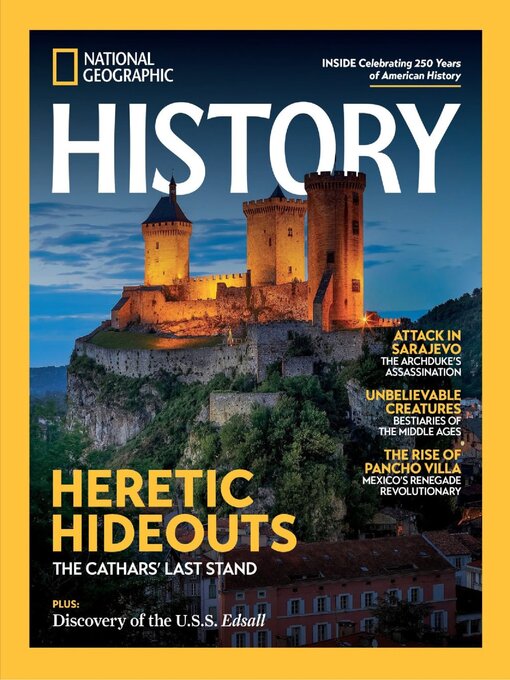
 September/October 2025
September/October 2025
 July/August 2025
July/August 2025
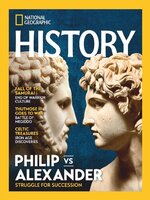 May/June 2025
May/June 2025
 March/April 2025
March/April 2025
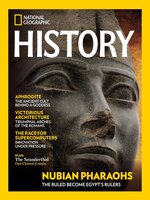 January/February 2025
January/February 2025
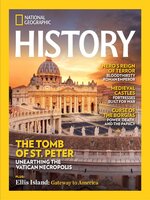 November/December 2024
November/December 2024
 September/October 2024
September/October 2024
 July/August 2024
July/August 2024
 May/June 2024
May/June 2024
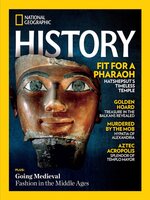 March/April 2024
March/April 2024
 January/February 2024
January/February 2024
 November/December 2023
November/December 2023
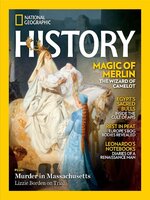 September/October 2023
September/October 2023
 July/August 2023
July/August 2023
 May/June 2023
May/June 2023
 March/April 2023
March/April 2023
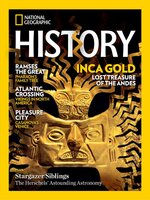 January/February 2023
January/February 2023
 November/December 2022
November/December 2022
 September/October 2022
September/October 2022
 July/August 2022
July/August 2022
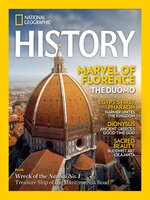 May/June 2022
May/June 2022
 March/April 2022
March/April 2022
 January/February 2022
January/February 2022
 November/December 2021
November/December 2021